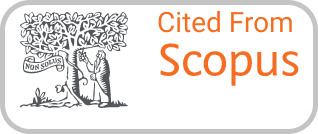AMDAL-BASED RISK IDENTIFICATION IN THE EAST SURABAYA HOSPITAL CONSTRUCTION PROJECT
DOI:
https://doi.org/10.46799/ijssr.v5i2.1179Keywords:
construction project, EIA, environmental management, hospital development, risk identificationAbstract
The East Surabaya Hospital construction project is one of the most important projects in the healthcare sector. The objective of this study was to identify, analyze, and proactively manage risks that could potentially affect the success of the hospital construction project. This research uses a descriptive-analytical approach with mixed methods to identify and analyze the dominant risks affecting the project success. The results of this research show that comprehensive risk management is a crucial element to ensure project success, with the implementation of measures such as routine maintenance of heavy equipment, efficient procurement of materials, proactive communication with communities and accelerated coordination between agencies for licensing. Furthermore, the results of regression analysis also show that this approach contributed significantly to the achievement of project objectives, with indicators of success including on-time completion, costs within budget, and quality of results that met standards. Therefore, this research serves as a model that can be applied to similar projects, especially those with significant impacts on the environment and surrounding communities.
References
Adebisi, E. O., Ojo, S. O., & Alao, O. O. (2018). Assessment of factors influencing the failure and abandonment of multi-storey building projects in Nigeria. International Journal of Building Pathology and Adaptation, 36(2). https://doi.org/10.1108/IJBPA-10-2017-0048
Agyekum-Mensah, G., & Knight, A. D. (2017). The professionals’ perspective on the causes of project delay in the construction industry. Engineering, Construction and Architectural Management, 24(5). https://doi.org/10.1108/ECAM-03-2016-0085
Alvand, A., Mirhosseini, S. M., Ehsanifar, M., Zeighami, E., & Mohammadi, A. (2023). Identification and assessment of risk in construction projects using the integrated FMEA-SWARA-WASPAS model under fuzzy environment: a case study of a construction project in Iran. International Journal of Construction Management, 23(3). https://doi.org/10.1080/15623599.2021.1877875
Bahamid, R. A., Doh, S. I., Khoiry, M. A., Kassem, M. A., & Al-Sharafi, M. A. (2022). The Current Risk Management Practices and Knowledge in the Construction Industry. Buildings, 12(7). https://doi.org/10.3390/buildings12071016
Durdyev, S., & Hosseini, M. R. (2020). Causes of delays on construction projects: a comprehensive list. International Journal of Managing Projects in Business, 13(1). https://doi.org/10.1108/IJMPB-09-2018-0178
Ferdous, W., Bai, Y., Ngo, T. D., Manalo, A., & Mendis, P. (2019). New advancements, challenges and opportunities of multi-storey modular buildings – A state-of-the-art review. Engineering Structures, 183. https://doi.org/10.1016/j.engstruct.2019.01.061
Herlina, N., & Supriyatin, U. (2021). AMDAL SEBAGAI INSTRUMEN PENGENDALIAN DAMPAK LINGKUNGAN DALAM PEMBANGUNAN BERKELANJUTAN DAN BERWAWASAN LINGKUNGAN. Jurnal Ilmiah Galuh Justisi, 9(2). https://doi.org/10.25157/justisi.v9i2.5610
Irfan, M., Khan, S. Z., Hassan, N., Hassan, M., Habib, M., Khan, S., & Khan, H. H. (2021). Role of project planning and project manager competencies on public sector project success. Sustainability (Switzerland), 13(3). https://doi.org/10.3390/su13031421
Iyer, V. G. (2022). Strategic environmental assessment (SEA) process for business, economics, management, and eco-tourism, towards sustainable development. Global Journal of Business, Economics and Management: Current Issues, 12(1). https://doi.org/10.18844/gjbem.v12i1.5282
Iyer, V. G. (2024). Importance of Strategic Environmental Assessment (Sea) Process and Environmental Health Impact Assessment (Ehia) Process Towards Sustainable Climate Change And Control. Journal of Intelligent Computing and Mathematics. https://doi.org/10.55571/jicm.2024.01028
Kamal, U., & Gustaf, M. (2022). Environmental Impact of Semarang-Demak Toll Development. Proceedings of the 4th International Conference on Indonesian Legal Studies, ICILS 2021. https://doi.org/10.4108/eai.8-6-2021.2314365
Khatib, M. El. (2022). BIM As a Tool To Optimize And Manage Project Risk Management. International Journal of Mechanical Engineering, 7(1).
Patriadi, A., Soemitro, R. A. A., Warnana, D. D., Wardoyo, W., Mukunoki, T., & Tsujimoto, G. (2021). THE INFLUENCE OF SEMBAYAT WEIR ON SEDIMENT TRANSPORT RATE IN THE ESTUARY OF BENGAWAN SOLO RIVER, INDONESIA. International Journal of GEOMATE, 20(81). https://doi.org/10.21660/2021.81.j2072
Pidada, I. B. I. W., Arjaya, I. M., & Wijaya, I. K. K. A. (2023). The Impact of Environmental Permitting with a Risk-Based Approach on Investments Based on the Job Creation Law. International Conference on “Changing of Law: Business Law, Local Wisdom and Tourism Industry”(ICCLB 2023). https://doi.org/10.2991/978-2-38476-180-7_91
Rahman, M. H. A., & Tjendani, H. T. (2022). Risk Identification Of Highrise Building Project Construction Implementation At Grand Dafam Signature Hotel Yogyakarta [Doctoral Dissertation]. Universitas 17 Agustus 1945 Surabaya.
Rodli, A. F., Prasnowo, A., Wajdi, M. B. N., & Sajiyo, S. (2019). Building a Culture of Learning to Accelerate the Advancement of Higher Learning. International Conference on Religion and Public Civilization (ICRPC 2018). https://doi.org/10.2991/icrpc-18.2019.5
Soeryodarundio, K., Setiono, S., & Soengkar, R. R. (2022). ANALISIS MANAJEMEN RISIKO PROYEK DENGAN METODE ZERO-ONE (Studi Kasus: Proyek Pembangunan Gedung Perpustakaan Universitas Islam Internasional Indonesia Depok). Matriks Teknik Sipil, 10(4). https://doi.org/10.20961/mateksi.v10i4.63972
Tarigan, D. G. N. (2023). Effectiveness of AMDAL Implementation in Protecting Environmental Damage Due to Industrial. Communale Journal, 1(3). https://doi.org/10.22437/communale.v1i3.30375
Zidane, Y. J. T., & Andersen, B. (2018). The top 10 universal delay factors in construction projects. International Journal of Managing Projects in Business, 11(3). https://doi.org/10.1108/IJMPB-05-2017-0052
Downloads
Published
Issue
Section
License
Copyright (c) 2025 Mochammad Djatmiko, Andi Patriadi, Sajiyo Sajiyo

This work is licensed under a Creative Commons Attribution-ShareAlike 4.0 International License.
Authors who publish with this journal agree to the following terms:
- Authors retain copyright and grant the journal right of first publication with the work simultaneously licensed under a Creative Commons Attribution-ShareAlike 4.0 International. that allows others to share the work with an acknowledgement of the work's authorship and initial publication in this journal.
- Authors are able to enter into separate, additional contractual arrangements for the non-exclusive distribution of the journal's published version of the work (e.g., post it to an institutional repository or publish it in a book), with an acknowledgement of its initial publication in this journal.
- Authors are permitted and encouraged to post their work online (e.g., in institutional repositories or on their website) prior to and during the submission process, as it can lead to productive exchanges, as well as earlier and greater citation of published work.













